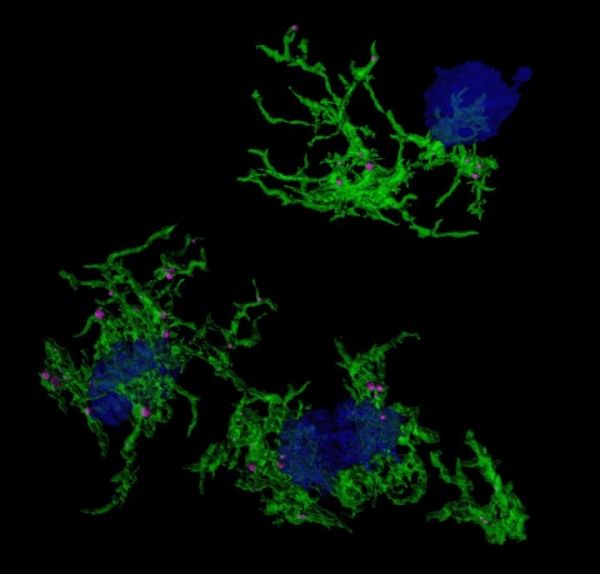Alzheimer’s Disease is the most common form of dementia and is characterised by the build-up of amyloid plaques in the brain. Microglia, the immune sentinels of the brain, are not only responsible for eliminating foreign invaders, but also maintaining brain homeostasis by clearing toxic waste such as the amyloid plaques.
However, the role of microglia in Alzheimer’s Disease and its relationship to amyloid plaque accumulation remain unclear. Now, a team of scientists from Duke-NUS Medical School and Monash University have found the gene expression signatures underlying microglia associated with amyloid plaque phagocytosis – i.e. the engulfing of deposits of the amyloid beta (Aβ) protein in the brain. The findings, reported in the journal Nature Communications, offer a new target for interventions that aim to address the underlying disease mechanism of this incurable disease.
To investigate the differences between healthy brains and those of patients with Alzheimer’s Disease at the single cell resolution, the team of scientists at Duke-NUS and Monash embarked on an ambitious project to comprehensively study gene expression changes in specific human brain cell types that are associated with progression of Alzheimer’s disease. From that study, which was published in Nature Neuroscience in 2019, the team have honed in on microglia.
“We sought to understand the molecular mechanisms and differences between microglia that were actively engulfing amyloid plaques in Alzheimer’s disease and those that weren’t,” said Associate Professor Enrico Petretto from Duke-NUS’s Cardiovascular and Metabolic Disorders Programme, a co-senior author of the study.
Read more at Duke-NUS Medical School
Image: Confocal microscopic image of microglia (green) engulfing amyloid plaques (blue). (Credit: Duke-NUS Medical School)


